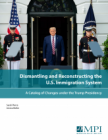Family Reunification
Recent Activity

A discussion marking the 25th anniversary of the 1990 Immigration Act, where experts examinine the history of the legislation, how it was accomplished politically, and the stakeholders and issues that were critical to its passage.

Commemorating the 50th anniversary of passage of the Immigration Act of 1965, this symposium focuses on the political and policy dynamics that came together to make the law possible and how it changed the U.S. legal immigration system, the country's demographics, and future.
The flow of unaccompanied children from Central America and Mexico to the United States has surged 90 percent since last year, with government officials predicting that it might reach 90,000 by the end of the fiscal year in September—and perhaps 130,000 next year. This telebriefing discusses factors behind the flows as well as short- and longer-term policy options for improving how the U.S. immigration system interacts with this population with distinct needs.

This event with UN High Commissioner for Refugees António Guterres features findings from UNHCR’s report, Children on the Run, which examines the increasing numbers of children from Central America and Mexico who head off alone to find refuge in the United States, fleeing violence, insecurity, and abuse.

This panel discussion on unaccompanied minors focuses on a report by Kids in Need of Defense and the Center for Gender & Refugee Studies at UC Hastings College of the Law, whose primary conclusion is that children face a U.S. immigration system created for adults that is not required to consider the child’s best interests.




















Legalization for DREAMers: A Realistic Appraisal of Potential Chain Migration
The RAISE Act: Dramatic Change to Family Immigration, Less So for the Employment-Based System
Leaked Draft of Possible Trump Executive Order on Public Benefits Would Spell Chilling Effects for Legal Immigrants
What Is the Right Policy Toward Unaccompanied Children at U.S. Borders?
The Current Record on Deportations: What Underlies the 'Eye of the Beholder' Dynamic?
Pages